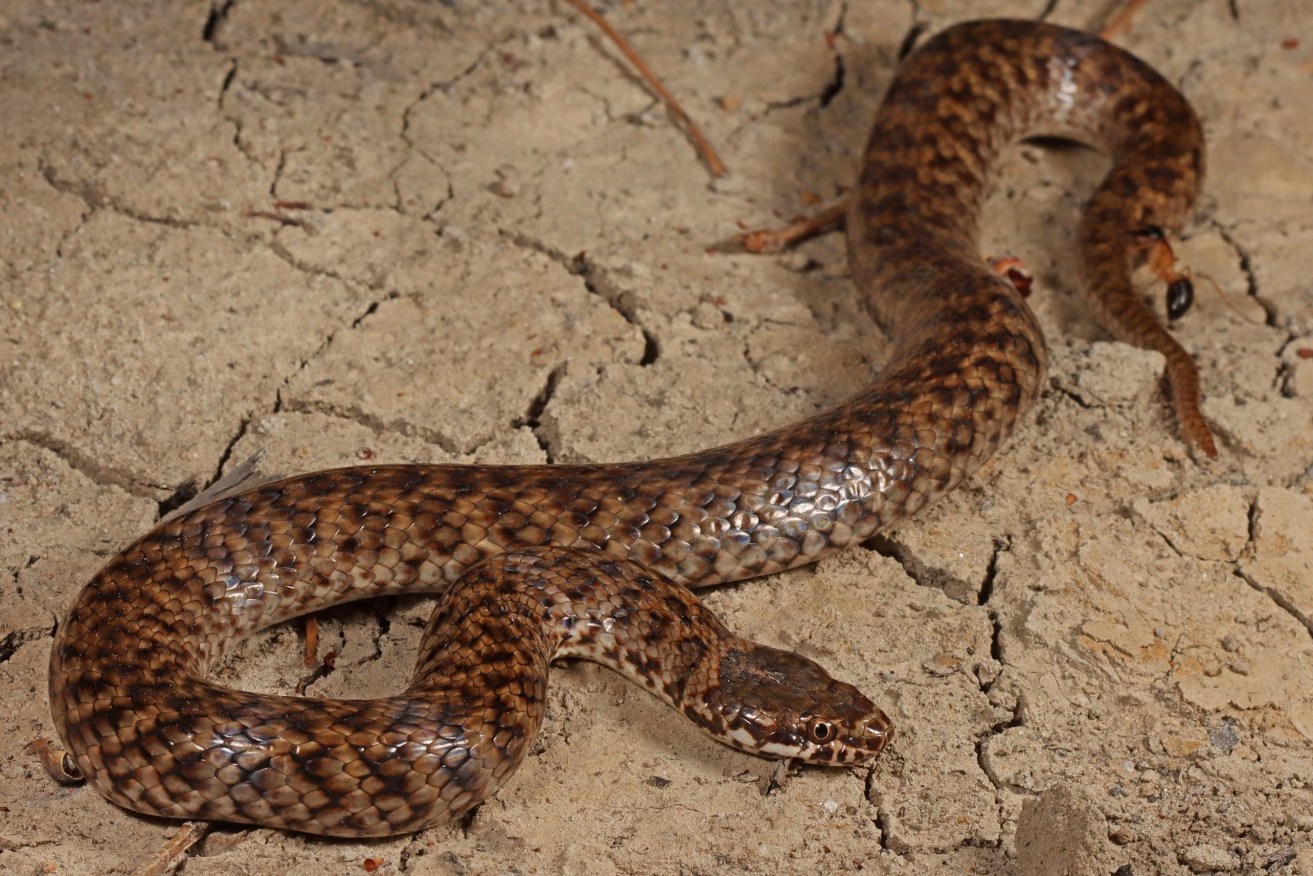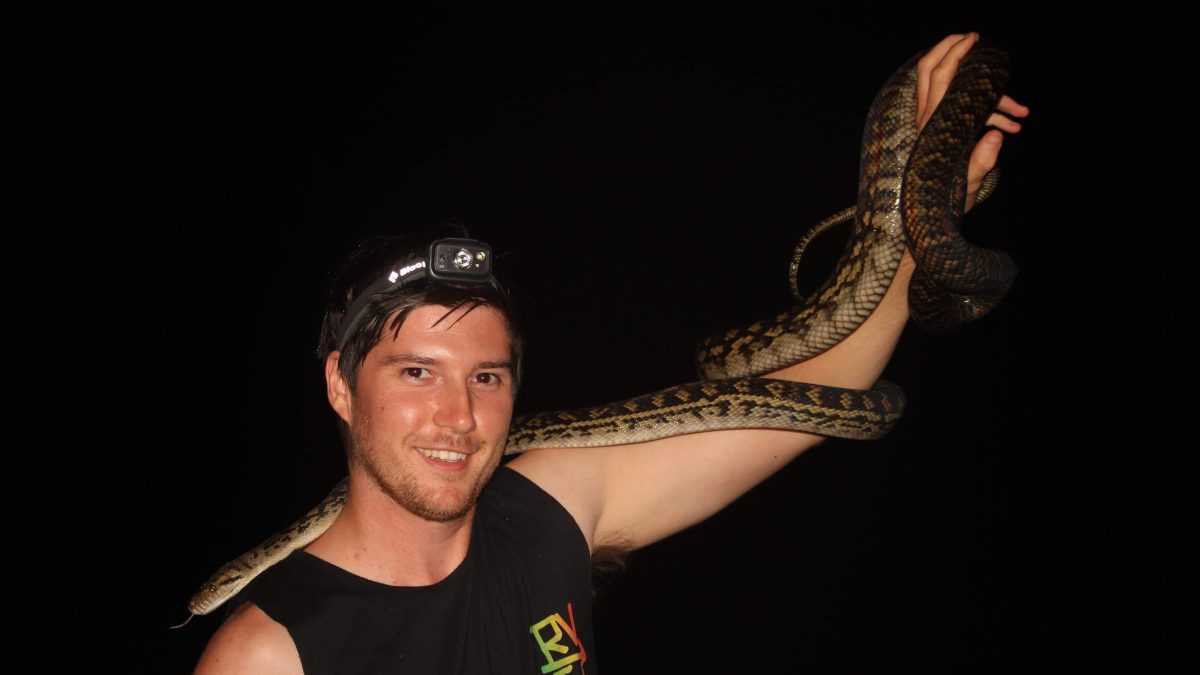SA’s venomous snake list just got longer
Venomous mud adders have been discovered trawling South Australian floodplains for the first time, after a group of keen reptile enthusiasts found them by chance at Chowilla Game Reserve near Renmark.


First mud adders spotted in SA. Pic: Connor Margetts
Reptile keeper Scott Regan said a group of five mates, including University of SA PhD student Shawn Scott, were searching for endangered Southern Bell frogs when they discovered four of the reptiles known as the De Vis’ Banded Snake.
“We were out looking for the Southern Bell frog, they are considered endangered in SA,” Regan said.
“We stumbled across this snake and we straight away knew we had found something. We didn’t have any reception, so the next day when we had reception in Renmark we called the curator of the SA Museum and he confirmed on the phone there had been no recorded sightings in SA before, we were the first.”
Uni SA herpetologist Shawn Scott and Regan have now published a joint paper with their mates, recording the sighting of the adders including the first that was partially concealed in a crack in dried mud on the River Murray floodplain, biting onto a Southern Bell frog.
Their discovery brings South Australia’s total number of venomous snake species to 37.
Three other yellowy orange brown mud adders (Denisonia devisi) that grow up to 60cm long were found nearby; one at the base of a large river redgum, and others also in soil cracks.
Scott said the snake is widespread in Queensland and northern New South Wales but endangered in Victoria, and the sighting of the first adder is also believed to be the first where the snake species has been seen consuming the Southern Bell frog.
Regan, who recently moved to Queensland to be reptile keeper job at a wildlife park, said the group of keen wildlife photographs regularly travelled together to spot reptiles but this trip was particularly memorable.
“This is a highlight, and another is seeing a green tree python in northern Queensland, it’s absolutely stunning,” he said.
“I’m interested in all reptiles, not just snakes, and another highlight for me has been seeing the Thorny Devils, they are by far the coolest lizard I’ve ever seen in the wild.”

Reptile keeper Scott Regan was among five mates who discovered mud adders in SA for the first time. Pic: supplied
Regan said the mud adders had wide range and it was possible the ones his group spotted had travelled from a “tiny distribution found in Victoria that is considered endangered”, that is sited about 50km west from where they were camping.
The snakes are considered mildly venomous, he said, meaning a bite would generally create itchiness or redness “but everyone reacts to venom very differently”.
The finding has been published in the latest issue of Herpetological Conservation and Biology, also with Harrison Jones, Connor Margetts and Sean Kirby.
Its authors believe their discovery underlines the need for greater conservation efforts in Australia’s river systems, particularly for reptiles, as many snake species are small and live in isolated or specialised ecosystems.
“If we are to mitigate biodiversity loss among our reptiles, we need to monitor not only remote or poorly understood ecosystems, but also areas that have extensive survey histories, which could result in the discovery of species that may have been undetected in the past,” Scott said.
The snake’s scientific and common names refer to Charles Walter de Vis (1829-1915), first director of the Queensland Museum and renowned herpetologist.




